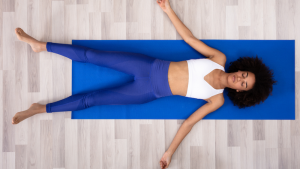Almost every patient I see in pain asks if their bed or mattress could cause their symptoms. While your bed could contribute to discomfort, making a change is not always easy. The main concern for most people is sleep disturbances, and comfort is a critical factor in getting a refreshing sleep, and that presents a problem.
There are so many variables in what constitutes “comfortable”, and it’s impossible to define the “best” mattress objectively. Most of us can’t be clear on are own preference without actually trying out a mattress, and one night often isn’t enough. Plus if you share your bed with a partner, this may need a compromise.

We are nearly at the end of Sleeptember, an annual awareness month to highlight the importance of good quality sleep. Ironically, I’ve missed most of it because of another bout of INSOMNIA!
You’ve probably heard all the problems poor sleep can contribute too? Adverse effects on our physical health and mental wellbeing. Decreased work performance, not to mention being another factor in lowering our immune function, be one cause of weight gain and a huge factor in wearing a grumpy face… argh!
We have evolved to be active during the day and sleep at night, but modern life means that’s not always possible, lots of people suffer poor sleep: new parents, shift and night workers and huge number of people in pain. There is a plethora of studies and conflicting opinions about the holy grail of good quality sleep, none so debated as the needs of those with back or other joint pain.
Should you change your mattress?
I think the question people are genuinely asking is “will changing my mattress to solve my pain or discomfort?” Like most things in life, it depends, sorry if that’s a cop-out answer. There are a few studies which found that back pain can improve when sleeping on a new mattress if the previous one was old or of poor quality. Well, that makes some sense, but this also opens a flurry of further questions. None of these studies advises what kind of mattress to choose because this is so subjective and changeable.
There are zillions of beds and mattresses on the market, many seemingly identical but confusingly going by several names. So it’s essential to take time to find the right mattress for you, and if possible, try out a few types before deciding which to buy is strongly is advised. After all, purchasing a new mattress is a ten-year relationship.
Manufacturers and suppliers often make big claims about their mattresses, add to the picture the growing trend of adopting more primal ways of living; some people are advocating dumping conventional beds and their mattress in favour of a more “natural” approach to sleep, on the ground, primal-style. While this may work for some, if you have ever had to sleep on the floor as an adult, you might see this as a less than a comfortable solution to better sleep. If you are going give primal sleeping a go, note that best results require a period of graded transition, often over a year or longer. Yep, it might take up to 18 months to make a permanent change. And some experimenting to find the right combinations of natural materials to bed down on.

Mattress Types
Orthopaedic mattress
Manufacturers use the term orthopaedic to mean an extra firm mattress, but medical-sounding words including orthopaedic, do not automatically mean that the bed has undergone professional assessment. Or will aid a comfortable, restful nights sleep. An orthopaedic mattress isn’t right for all people with back pain, or anyone else for that matter, but it might be a suitable option for those who are large framed or very heavy.
Innerspring mattresses
Offer firm support from coils, and it’s the most popular type of mattress in the UK.
Memory foam mattresses
These have a firm inner core of memory foam to provide support which contours to the body and may offer pressure relief. The material thermoregulates and adjusts to body temperature. Note while some people love this, others report they make them feel very warm.
Latex mattresses
Provide noticeably more bounce and responsiveness than an innerspring mattress. They will also be cooler than memory foam.
Hybrid mattresses
These combine memory foam or latex layers on top of an innerspring mattress which may provide the right mix of support and softness for some people.
Airbeds & Waterbeds
While these offer more options to adjust firmness, via their separate chambers, waterbeds can be heavy.
Adjustable beds
The ability to raise or lower certain parts of the bed can help some people’s comfort and sleeping. They can offer variable levels of incline, provide support under the knees, and elevate legs and feet.
Buying tips
- The general advice is to replace your mattresses every ten years.
- Buy the biggest bed you can accommodate and afford. If you have space, buy a king-size bed or larger. Agreed, you will pay more than purchasing a standard double bed, but the additional space is really not a luxury when you consider that you will probably sleep on it for the next 3650 nights (10 years).
- If you share a bed with someone much bigger or smaller than you, buying two single beds that can be connected or zipped together is a useful consideration.
- High-quality latex or memory foam mattresses are often recommended as the best option for people with persistent back pain, although they aren’t cheap.

Being practical
- Make sure you can lift and move your mattress without causing yourself an injury. As a minimum, you need to tuck the sheets under when you change the bed linen.
- If you can visit a showroom or bedding department to see which firmness of mattresses is likely to meet your needs, don’t be embarrassed to try one out. Sitting on the end of a bed will tell you nothing about how well you’ll sleep on it. To check whether a mattress has the correct level of support takes at least 30 minutes. You need to lie in your preferred sleeping position with your usual amount of pillows, I recommend 60 minutes.
- Take up a free trial but with caution. Some companies offer 30-night trial while others up to 100 nights. Check the T&C’s including any return costs. Not all end of trial collections are free; some can be very costly. You also have to consider whether you can store your current mattress during the trial period.
Checking the fit
The Sleep Council offer a useful guide to check if the bed you are lying on is a good fit. I’ve nicknamed the guide below ‘the Goldilocks hand slide’.
Here’s how to try their test
- Lie on your back and slide your hand into your lower back where the hollow is. If it slides in easily, the bed may be too hard, which can lead to pressure on the hips and shoulders.
- If it’s a struggle to slide your hand in the bed is probably too soft and won’t offer enough support.
- If you can move your hand with just a little resistance, the bed may be just right for you.
More information
The sleep council has a great online leaflet about mattresses and bed frames. You can access it with this link. (opens in a new tab) https://sleepcouncil.org.uk/wp-content/uploads/2018/04/BBG-website-view.pdf
Coming soon, Sleep positions, and Pillows, do we need them?






